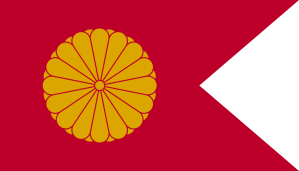
Across its imperial history Japan saw the rule of eight empresses regnant in its early period, with two more empresses regnant in the Edo period. Alongside this, there were many empress consorts who held varying degrees of power according to their status and relationship with the emperor. Japan is also notable for the numerous powerful empress dowagers in its history. Spanning several islands, the country of Japan has had monarchical rule since c. 660BC, and has transformed in the twelfth century with the solidification of military governments, known as shogunates. Between 1192 and the Meiji Restoration in 1868, emperors were to largely hold power in name only. From the Meiji Restoration to 1947, imperial power became realised once again. Since then, the empress has been reduced to a largely ceremonial role.
You can find out more about some of Japan’s empresses below!
Bibliography
Adams, Tracy and Ian Fookes. “Queens and Courtesans in Japan and Early Modern France.” In A Companion to Global Queenship, edited by Elena Woodacre, 285-298. Leeds: ARC Humanities Press, 2018
Bender, Ross. “Emperor, Aristocracy, and the Ritsuryō State. Court Politics in Nara.” In Japan Emerging. Premodern History to 1850, edited by Karl F. Friday, 111-121. New York: Routledge, 2019
Bender, Ross. The Last Female Emperor of Nara Japan 749-770. 2021
Henshall, Kenneth G. Dimensions of Japanese Society: Gender, Margins and Mainstream. New York: Palgrave Macmillan, 1999
Jansen, Marius B. The Making of Modern Japan. Cambridge, MA: Harvard University Press, 2000
Ponsonby-Fane, Richard. The Imperial House of Japan. Kyoto: Posonby Memorial Society, 1959
Tsurumi, E. Patricia. “Japan’s Early Female Emperors.” Historical Reflections/Réflexions Historiques 8.1 (1981): 41-49.
